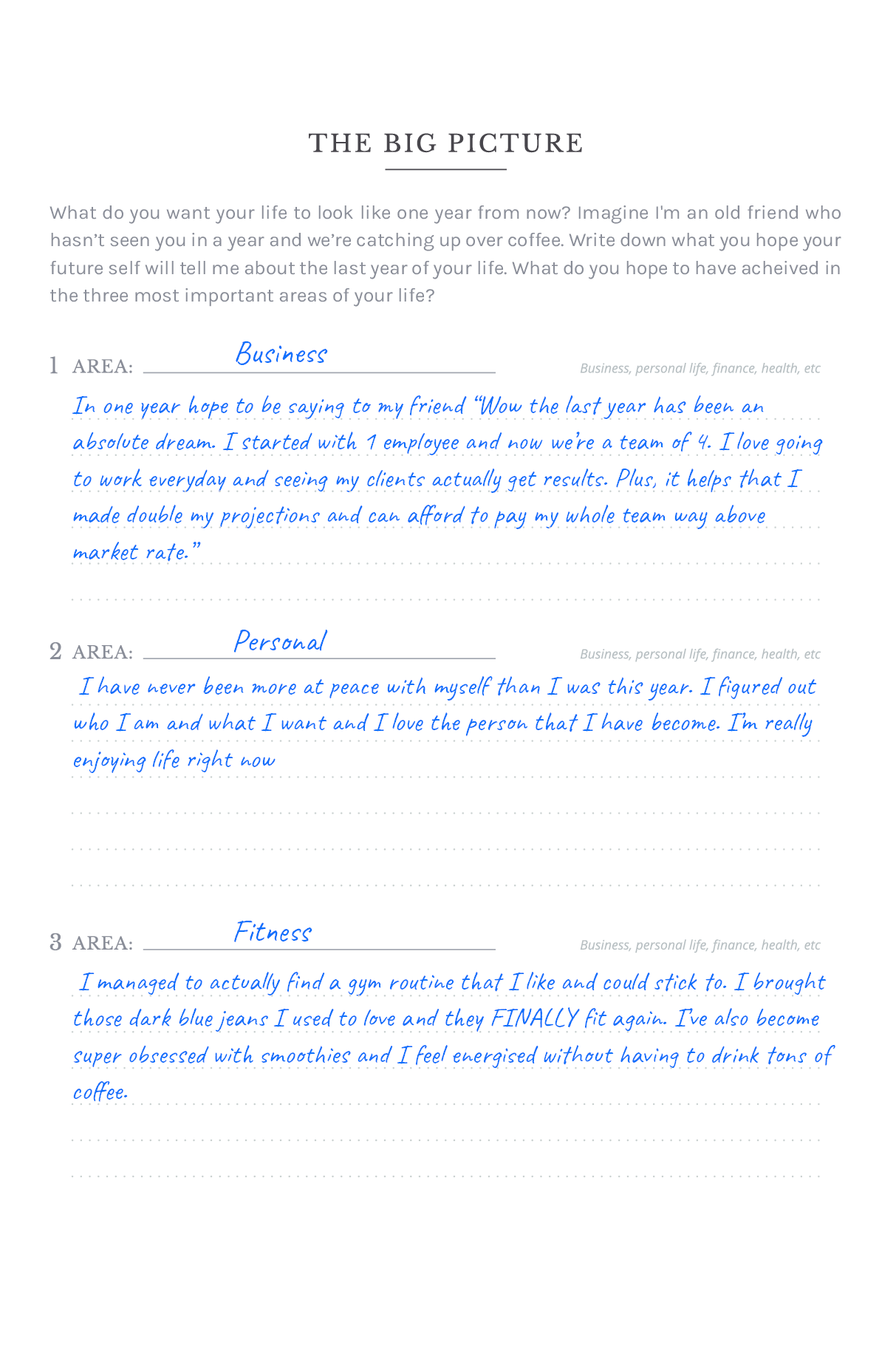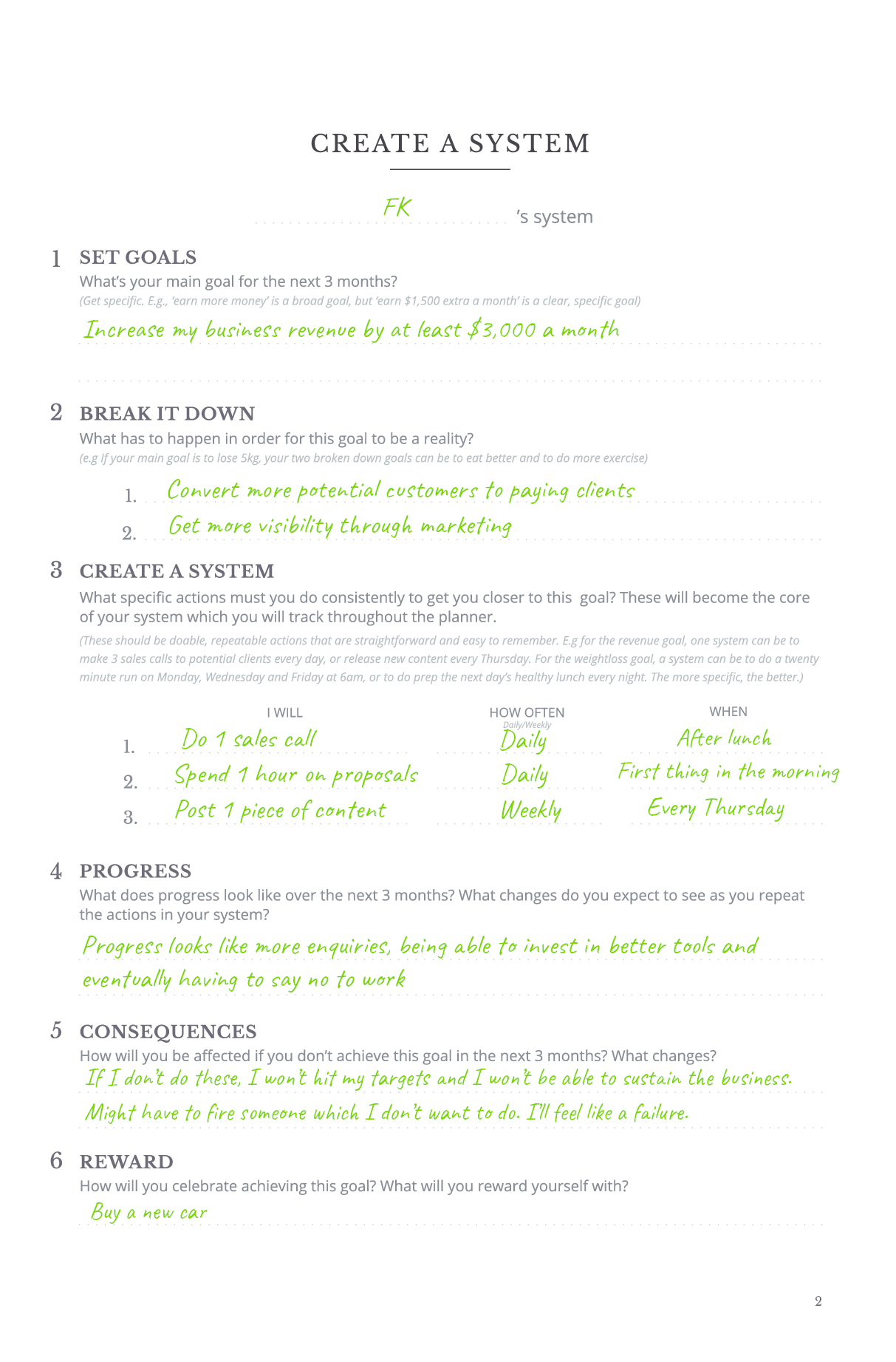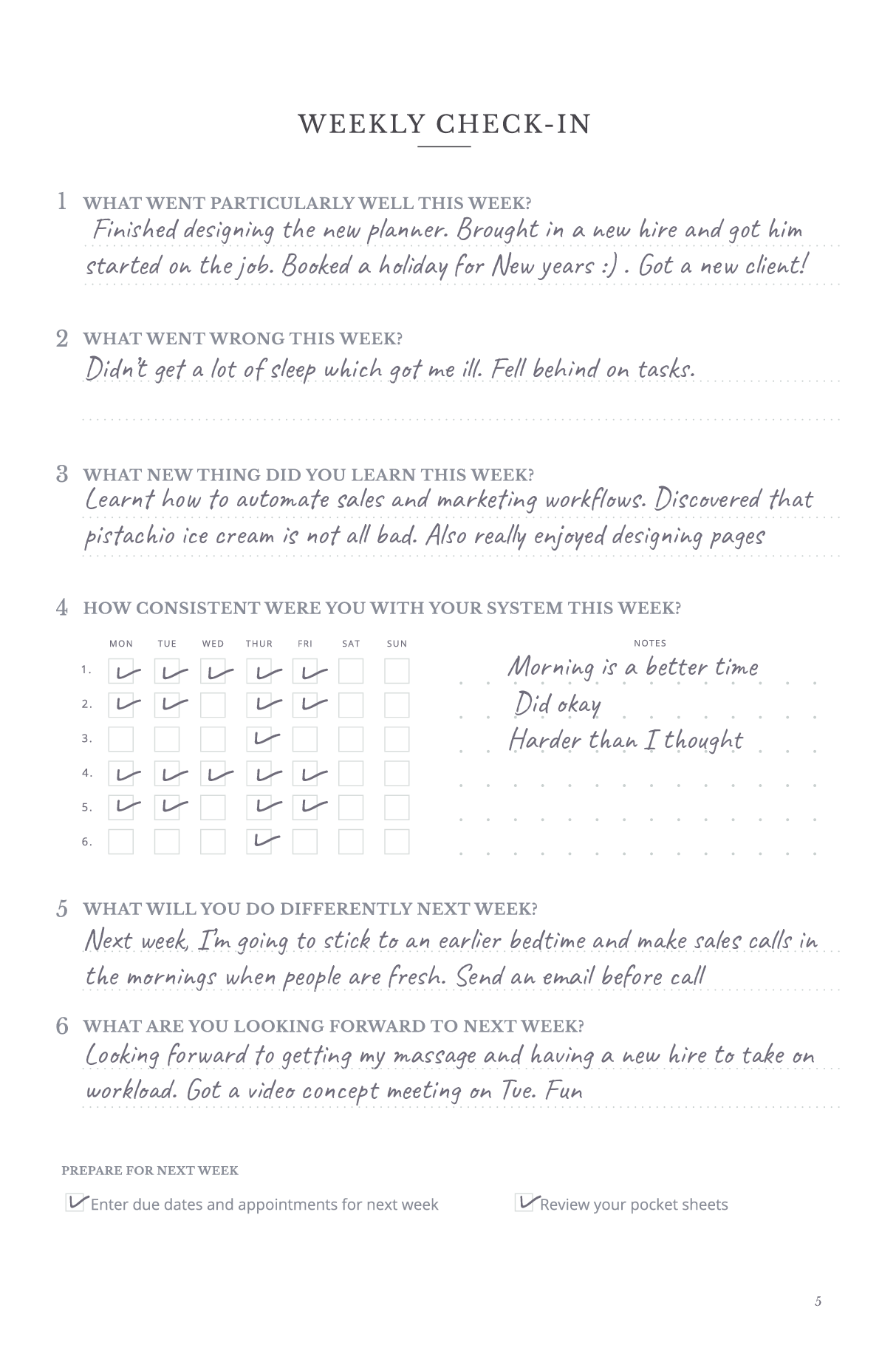So another year has come and gone and you still haven’t run a marathon, saved for a trip to Europe, or even organized your garage. All of your yearly resolutions have been made and promptly forgotten.
Hey, I get it! Achieving any goal can be difficult, big or small. Procrastination (and life in general) gets the best of us. A few months ago, I cracked the code and completely changed the way I approach my goals. The system (which I’m now calling the Steady System) worked so well that I decided to create a daily planner around the system. The great thing about this system is that it can work whether or not you’ve got the planner. All you need is somewhere to take notes.
Anyone can use The Steady System to achieve their goals by staying accountable to themselves and making a little bit of progress every day and every week. It has three main steps: “Ready, Set, Goals!”, that I’ll break down for you. They are:
1. Ready: Think about the big picture and figure out what it is you really want.
2. Set: Create a system by breaking your goals down into their most important pieces, and then use that information to make a plan.
3. Goals: Plan your days in a way that allows you stay on top of your new system. Keep yourself accountable each week.
Below, I‘ll explain each step in detail. You can download this handy Steady System checklist to use whenever you want (so you don’t always have to come back to this article.
Ready to change your life? Let’s get started:
READY
Step one of your journey in the Steady Planner is to establish your “Big Picture”.
Having a clear idea of what you actually want is half the battle in achieving any big goal. It’s not enough to know just what you want, you also need to understand why you want it. It’s what’s going to drive you forward. That “why” is what’s fundamentally going to keep you going. You won’t be able to sustain momentum on anything that doesn’t have a strong enough “why”, even if it’s what you think you want.
- Start by considering what you want your life to look like one year from now. Imagine that you’re meeting an old friend for coffee in April 2020 ( exactly a year from now) and you haven’t seen them all year. What do you hope your future self will be able to tell them about the last year of your life?
- Identify the 3 areas of your life you want to make the most progress in. Business? Health? Family? It’s up to you! What do you hope to have achieved in these areas by the end of the year? Write all of this information down. You don’t have to write long paragraphs, just give each point enough colour to make it meaningful.
- As you’re writing these down consider if you are truly driven to accomplish these things. Many times we write down goals that we think we should work towards, rather than the things that are truly most important. If you can’t think of exact reasons why you want to achieve these things, remove them. When you eventually lose willpower and excitement, it’s your whys that will continue to motivate you.

SET
Once you know what you want, and why you want it, it’s time to break it down into two smaller goals, and then choose a small set of actions that you can, and must, do daily and weekly to make your big goal happen.
- First, establish your main goal(s). Pick something big, but specific within each of the areas you highlighted in ‘Ready’. For example, “Go on vacation” is a big goal, but “Save $500 a month for Bali trip in July” is clear and specific. You can work with that.
- Take that goal and break it down. Think about the 2 things that have to happen for your goal to be a reality. So, maybe to save $500 a month, you need to spend, say, $200 less per month and make $300 more.
- Identify the specific actions you must do consistently to get you closer to this goal. These will become the core of your system, which you will track later on. These should be doable, repeatable, straightforward actions that are easy to remember. For example, if your goal is to make more money, your system could be to call potential clients every morning for 1 hour. Alternatively, if your goal is to lose weight, your system might entail running 20 minutes every day at 6am. The more specific your actionable tasks are, the better.
- To keep yourself in check, think about what the consequence of failing this system will be. And on a more positive note, if you stay on track consistently for 3 months, how will you treat yourself?
The point here is to stack your small wins. Each individual time you complete an action, it might not feel like a big achievement, but in a month’s time, you will absolutely start to see progress.
Get the whole system as a simple checklist here.

GOALS
Now that you’ve established your system, it’s time to talk about planning your days around it so you don’t lose sight of what’s important to you. Our plannerhas this page built in, but you can do it in any notebook, or notes app. Devoting just 10 minutes of your day to this planning can drastically increase your productivity. It’s pretty simple:
- First, pick your top 3 priority tasks for your day. These are the things that absolutely have to get done for the day. Write ‘em down.
- Slot these tasks into your calendar. Pick the exact time you’ll be accomplishing these things and make sure to block out enough time for each. In my experience, if it’s not written down somewhere and given a time frame, it won’t get done. You can be flexible (because life happens), but try as much as possible to stick to this.
- Now, fill out the rest of your day’s schedule! These don’t have to be specific tasks, for example you can schedule “do errands if work is done”, but filling your calendar will help you keep your day on track.
- Remember to set daily and weekly recurring reminders for the actions you’ve committed to doing in the ‘Set’ section.
If your daily planning is done right, then weekly check-ins will be a breeze. At the end of every week, set a time to review your week and check in with yourself. Ask yourself the following:
- What went well?
- What went badly?
- What did you learn this week?
- What will you do differently next week?
Then, go over how well you did on the system itself. Did you remain consistent? Did you complete your daily tasks at least 5 out of 7 days? This page will help you stay accountable to yourself.
And that’s it! Taking thirty minutes to define your goals and create a system will dramatically change the way you go about your life. 30 minutes of work for a potential 12 months of change – a pretty sweet deal.
If you enjoyed this article, we suggest downloading our PDF summary. Follow us for more productivity tips and tools.




